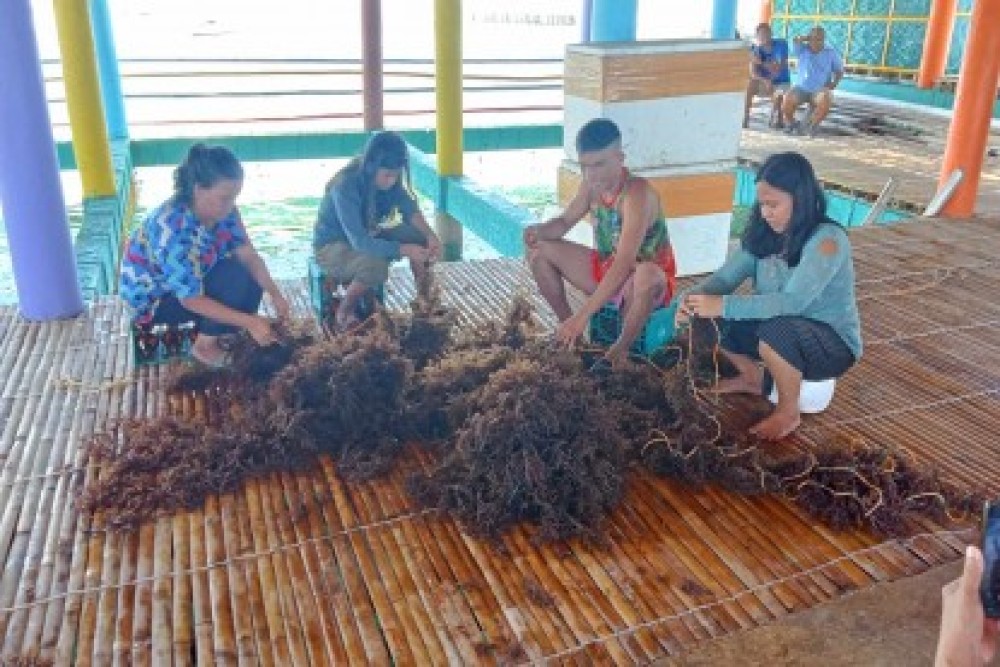TACLOBAN CITY – The Bureau of Fisheries and Aquatic Resources (BFAR) is stepping up efforts to rehabilitate the seaweed industry in Danajon islet in Bato, Leyte, after suffering production losses in the past five years.
The initiative, a partnership between BFAR regional offices in Eastern Visayas and Central Visayas, will benefit at least 1,000 farmers settled near Danajon Bank, the only double barrier reef in the country.
BFAR Eastern Visayas regional information officer Christine Gresola said in a phone interview Friday that various interventions are in place to bring back the production level recorded in 2020.
In 2020, farmers in Danajon harvested 17,731 metric tons (MT) of seaweed. Its output dropped to 11,877 MT in 2021.
A significant decrease was noted in 2022 and 2023, where farmers only harvested 1,718 MT and 895 MT, respectively, largely due to the impacts of Typhoon "Odette." In 2024, the islet only produced 1,058 MT of seaweed, according to Gresola.
Seaweed farms in the islet were destroyed by “Odette” when it crossed Leyte Island on Dec. 16, 2021. Losses ran into PHP200 million, including ready-to-harvest seaweeds, post-harvest facilities, and fishing boats.
“We are positive of higher yield this year. From 2022 to 2024, BFAR has already extended PHP6 million worth of interventions to improve seaweed production in Danajon,” Gresola said.
For 2025, BFAR will distribute PHP12.64 million worth of intervention, which includes farm implements, solar dryers, and seaweed carts.
Activities lined up this year include the introduction of high-quality seaweed varieties, community consultations and information drives that highlight seaweed farming as a sustainable livelihood option, and the conduct of test planting that will guarantee the supply of resilient seaweed species that can thrive in changing environmental conditions.
Danajon, an islet in Bato town near the islands of Bohol and Cebu, has a land area of only five hectares and a population of about 10,000.
About 90 hectares of its coastal area are devoted to seaweed farming, making it the seaweed capital of Eastern Visayas.
The residents have been relying on seaweed farming as their main source of living for more than 50 years.
DOST PHOTO


